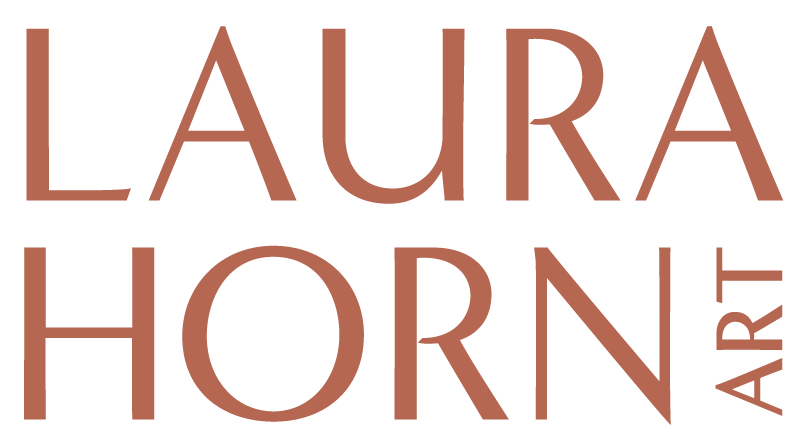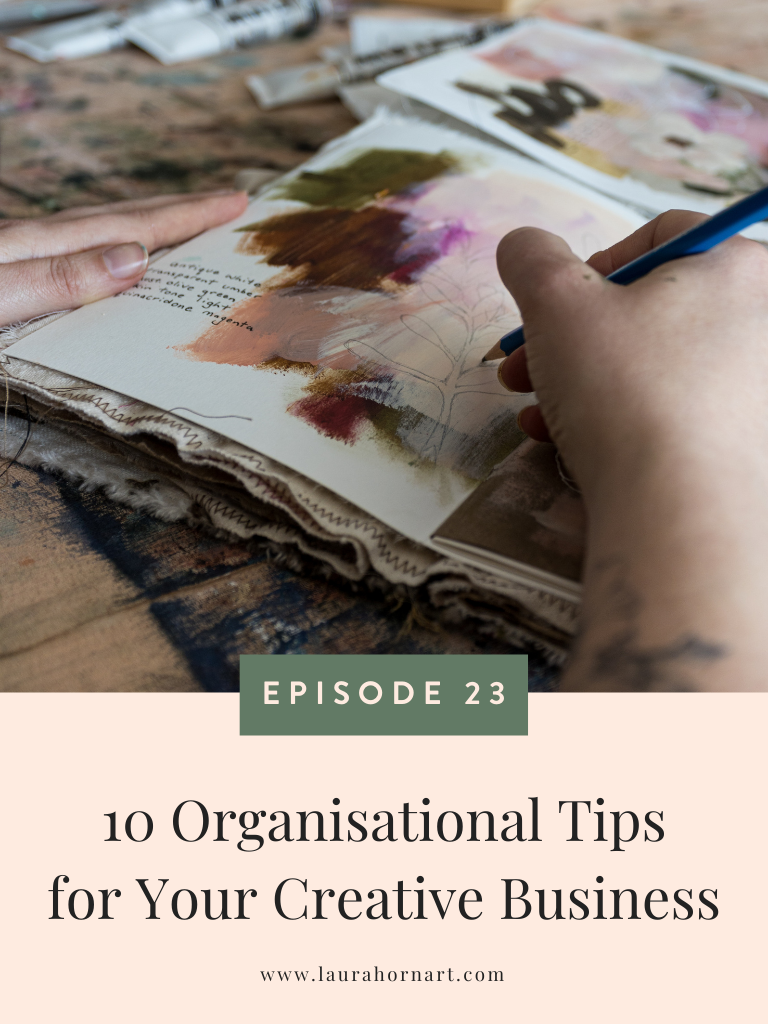10 Organisational Tips for Your Creative Business
EPISODE 23
This episode we are sharing 10 organisational ideas that your future self will thank you for. You know the types of things; storing your photos, doing a stock-take of your art supplies, filing your receipts and so on. But what about scheduling your self-care and making clear work boundaries? Richie puts me in the hot seat this week, shining the light on my unhealthy work habits and reminding me of just how stubborn I can be when I get fixated on something.
While I wouldn't say I loved this conversation as it was happening, when I listened to it back, I knew I had to leave it in, because while it is hard, we need to talk about this stuff. Talk about this impossible desire to do all the things. After this podcast I felt liberated and encouraged to make changes and I hope you do too.
This isn't about having everything figured out, this is about making your life easier so you have more time to enjoy what you love.
1. Have a planning tool and stick with it
Don’t underestimate the power of a good planner! Think of it as the hub of your business. My planning tool of choice is the project management program, Trello. I could go on for days about how much I love Trello but what is important is that you choose a planner that works for you. If you prefer a hard-copy planner, check out The Maker’s Yearbook by Nicola Taylor. It’s an incredible resource for creatives that gets you thinking in a much more strategic and proactive way.
2. Save your files logically so you can find them later
If you have ever spent hours looking for an important file in a jumble of documents and images, you’ll know just how frustrating it can be. Take some time now to set up a system that is searchable with folders and file names that make sense. Also, make sure that you are backing up your files to a service such as Google Drive.
3. Create a social media strategy
Decide on what social media platforms you are going to use, how often you will post and what tools you are going to use to help you. There are wonderful applications such as Plann, Later, Tailwind and Planoly that you can use to schedule and stay on top of your social media. You can also brainstorm ideas for captions and save hashtag groups so that when you come to post, you are already two steps ahead.
4. Get your accounts in order
Often accounting is left to the last minute causing stress and overwhelm. Before this happens, check in with yourself. Do you know what you are doing or do you need to contact your accountant to get some help? Make sure that your processes for recording revenue and expenses are sound so that when tax time comes around you are in a good place.
5. Clean up your work-space
Put away work that you are no longer focused on or even better, recycle it or give it away. Take a good look at your space and see if there are ways you could organise it better. Rearrange the furniture and look at how you store items. You might even want to give the area a lick of paint and a deep clean. A fresh space is a great way to stay inspired. Once it is clean and organised, take time to personalise it. I love adding vision boards and popping in a plant and cute mug or two.
6. Do a stock-take
As you are cleaning your space (tip 5), have a good look at your supplies. Do an inventory and determine what is running low. Record the items you need in a your planning tool (tip 1) so that you can plan your purchases and take advantage of when supplies are on sale.
7. Schedule your self-care
While you are getting organised, make sure that you also organise your self-care. Decide what it is going to be (e.g. walk, movie-date, yoga class), check that it is realistic and maintainable, then schedule it in and make it a non-negotiable. Start small knowing that you can always build it up over time.
8. Batch your work
Rather than multi-tasking, try to block out time to singularly focus on tasks. Whether that is responding to emails, photographing work, writing blog posts or managing your social media. You can even apply the idea of batching to your painting practice. I often work on a series of paintings as a batch. In one session I will apply the base layers for all pieces, the next session I will add marks and so on.
9. Develop workflows for key processes
I know many of us want to run a mile when the the word 'procedures' is mentioned, but, if you can look at procedures as a way to give you more time for what you really love, it's worth the investment. Keep it simple at first by starting with one key process. Ask yourself what would benefit from a well oiled workflow? It could be how you take your photographs, or perhaps the process for getting your work ready for sale in an online shop, whatever it is, map out the steps so you take the thinking out of the process and over time build a habit.
10. Establish healthy routines & boundaries
When running a creative business, often the line between your personal life and business life can become a blur. This happened to me recently when I was creating a digital workbook. I went down a deep rabbit hole, working long hours and refusing to come up for air. Sound familiar? As hard as it is, we need to accept as creatives that it is impossible to get to a point to when everything will be finished and boxed off. Remember, one of the advantages of being a creative business owner in the first place is the flexibility to choose your own hours. Make sure you choose them wisely, giving yourself regular breaks so that you can refuel and reconnect with other aspects of your life.
Well that’s it, I hope you found the 10 tips helpful. Even if you just focused on one or two of these ideas, imagine what a difference that could make to your creative business over time!

